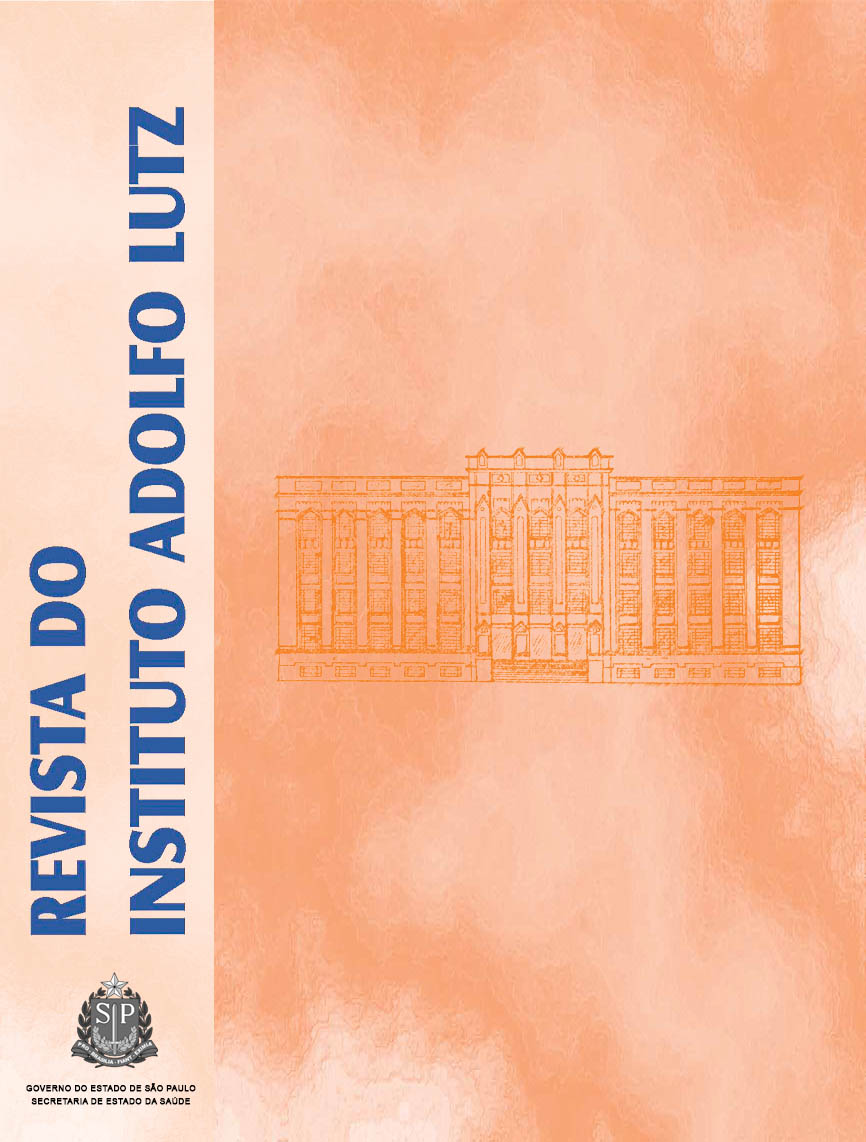Abstract
Levothyroxine (T4) and Liothyronine (T3) have been used for hypothyroidism treatment, and these drugs control the speed of corporeal chemical functions. The present study aimed to optimize and validate the methodology described in United States Pharmacopeia 28 for T3 and T4 determination by means of HPLC-UV, in order to make it suitable for concomitant evaluation for assessing the quality of in compounded medicines. Optimization was achieved by using acidified water (phosphoric acid :acetonitrile) 52:50, in temperature at 27°C and flow of 1.6 mL min-1, and 250 x 4.6mm column constituted by nitriles group bounded to 3 to 10μm porous silica particles, and detection at 238nm. The number of theoretical plates was 8500 and the obtained resolution factor was 5.12, which showed the efficiency of chromatography conditions. When this methodology was applied for testing the content uniformity in T3 and T4 compounded capsules, quality deviations were detected. The super dosage of active drug substances was one of the found deviations. Inadequate and high doses of active drugs as hormones are harmful to the patients, leading to be hospitalized, and even to death owing to drug intoxication mainly with narrow therapeutics windows drugs. The data observed in the present study demonstrate the occurrence of technical limitations in compounding pharmacy, and also a lack of appropriate quality control.References
1. Farwell PA, Braverman LE. Thyroid and Antithyroid Drugs In: The Goodman e Gilman’s. Pharmacological Basis of Therapeutics, 9ª ed. New York: Pergamon Press;1996, p. 1391-7
2. Martindale. The complete drug reference. 34.ed.London: The Royal Pharmaceutical Society of Great Britain. 2005, 1594-6; p. 1600-4.
3. The Merck Manual of Medical Information-HomeEdition: Merck Research Laboratories. Division of Merck& Co.,Inc. Whitehouse Station, N.J. 1997, p. 704-11.
4. Bricarello S. Hormônios da Tireóide e Drogas Antitireoidianas. In: Zanini AC, Oga S. FarmacologiaAplicada. 5.ed. São Paulo: Ed Atheneu; 1994,p. 616-21.
5. Garnick RL, Burt GF, Long DA, Bastian JW, Alfred JP. High-performance liquid chromatographic assay forsodium levothyroxine in tablet formulations: Contentuniformity applications. J Pharm Sci. 1984;73:75-7.
6. Richheimer SL, Amer TM. Stability-indicating assay, dissolution and content uniformity of sodiumlevothyroxine in tablets. J Pharm Sci. 1983;72:1349-51.
7. Brower JF, Toler DY, Reepmeyer JC. Determination of sodium levothyroxine in bulk, tablet, and injection formulations by high-performance liquid. J Pharm Sci.1984; 73: 1315-17.
8. British Pharmacopeia, Her Magesty’s Stationery Office (HMSO), London, 2004, p 1166-8.
9. United States Pharmacopeia 28 ed. Rockville: UnitedStates Pharmacopeial conventions. 2005;1137-39;p. 1126-9.
10. Lovell G, Corran PH. Determination of L-thyroxine inreference serum preparations as the o-phthalaldehyde-N-acetylcysteine derivative by reversed-phase liquid chromatography with electrochemical detection. J Chromatogr Biomed Appl. 1990;525:287-96.
11. Kazemifard AG, Moore DE, Aghazadeh A. Identification and quantification of sodium-thyroxineandits degradation products by LC using electrochemicaland MS detection. J Pharm Biomed Anal 2001;25:697-711.
12. Siekmann L. Measurement of thyroxin in human serumby isotope dilution mass spectrometry. Definitive methods in clinical chemistry. V. Biolog Mass Spect.1987;14:683-8.
13. Holak W, Shostak D. Differential pulse polarographic analysis of thyroid hormone: determination of iodine,thyroxine, and liothyronine. J Pharm Sci. 1979;68:338-42.
14. Armbruster MD, Harris R, Scarbrough R, Tamez C. Total triiodothyronine by fluorescence polarization immunoassay (FPIA). J Clin Lab Anal. 1988; 2: 3-6.
15. Kobuke L, Specker JL, Berm HA. Thyroxine content ofeggs and larvae of coho salmon, Oncorhynchus kisutch.J Exp Zool. 1987;242:89-94.
16. Bigos ST, MacLean J, Butler B. Comparison of serumfree thyroxine measurements by chemiluminescenceand equilibrium dialysis. J Biolum Chemilum. 1989;4:627-34.
17. Waseem A, Yaqoob M, Nabi A. Determination of thyroxine in pharmaceuticals using flow injection withluminol chemiluminescence inhibition detection. Lumin.2006;21:174-8.
18. US Pharmacopeia 28. Validation of compendia methods. United States Pharmacopeal Convention, Rockville,MD, 2005, 2748-51 p.
19. ICH Q2B: Tex on validation of analytical procedures methodology (International Conference onHarmonization of Technical Requirements for theRegistration of Drugs for Human Use, Geneva,Switzerland, March 1979). Published in Federal Register, 62(96), 19 May 1997,27463-7 p.
20. Brasil, RDC N° 10 Anexo V de 2 de Janeiro de 2001, Resolução da Diretoria Colegiada da Agência Nacionalde Vigilância Sanitária do Ministério da Saúde. Aprovao Regulamento Técnico para Medicamentos Genéricose estabelece Guia para validação de MétodosAnalíticos. Disponível em: http://elegis.anvisa.gov.br/leisref/public/showAct.php?=19777&word. Acesso em20/09/2007.
21. Inmetro (Instituto Nacional de Metrologia. Normalização e Qualidade Industrial). Orientações sobre Validação de Métodos e Ensaios Químicos.DOQ-CGCRE-008, Revisão: 00, 2002, 31 p.
22. Farmacopéia Brasileira 4ª Ed. Uniformidade de Doses Unitárias. Parte II, Primeiro fascículo, Atheneu EditoraSão Paulo Ltda, 1996.
23. Brasil, RDC n° 214 de 12 de Dezembro de 2006, Resolução da Diretoria Colegiada da Agência Nacionalde Vigilância Sanitária do Ministério da Saúde. Dispõe sobre as Boas Práticas de Manipulação de Medicamentos para Uso Humano em farmácias.Disponível em http://elegis.anvisa.gov.br/leisref/public/showAct.php?id=25128&mode=Print. Acessoem 23/2/2007.
24. Brasil, RDC n° 33 de 19 de abril de 2000, Resolução da Diretoria Colegiada da Agência Nacional de Vigilância Sanitária do Ministério da Saúde. Aprova RegulamentoTécnico de Boas Práticas de Manipulação em Farmácias. Diário Oficial da República Federativa do Brasil, Poder Executivo, Brasília, DF, 24 de abril 2000. Seção 1, n°78-E, p. 27.
25. Brasil, RDC n° 354 de 18 e Dezembro de 2003, Resolução da Diretoria Colegiada da Agência Nacional de Vigilância Sanitária do Ministério da Saúde. Estabelece a manipulação de produtos farmacêuticos emtodas as formas farmacêuticas de uso interno, quecontenham substâncias de baixo índice terapêuticodefinidas no Anexo I. Disponível em http://www.anvisa.gov.br/Legis/resol/2003/rdc/t354?rdc.htmAcesso em 29/12/03.

This work is licensed under a Creative Commons Attribution 4.0 International License.
Copyright (c) 2007 Instituto Adolfo Lutz Journal
